Modern art represents a groundbreaking shift from traditional styles, emphasizing individual expression and innovation. This artistic movement, which spanned from the late 19th to early 20th centuries, encompasses various influential styles like Cubism, pioneered by Picasso, and Surrealism, as seen in Dalí’s works. Iconic artists, like Frida Kahlo and Andy Warhol, explored themes of identity and consumerism through groundbreaking techniques. Let’s dive in and discover how these visionary figures and movements continue to shape artistic expression today.
Origins of Modern Art
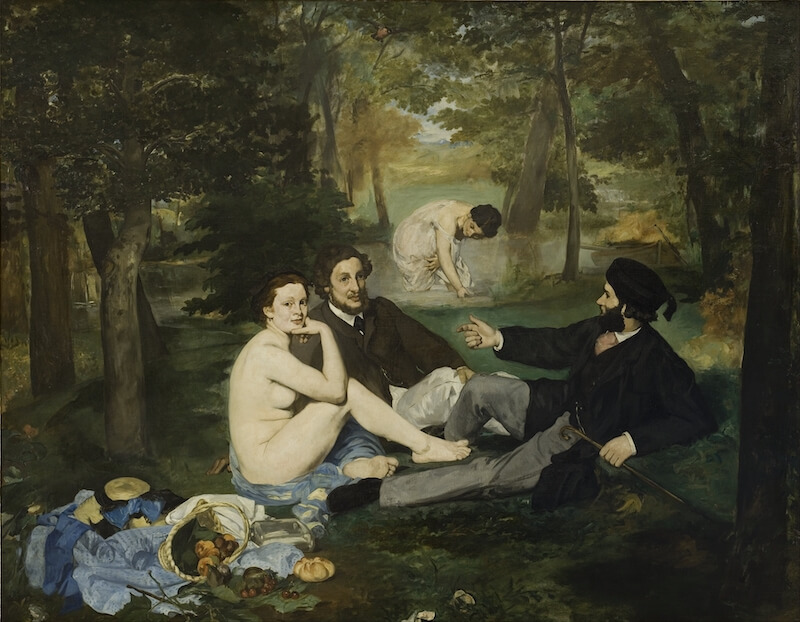
Modern Art emerged in the late 19th and early 20th centuries, marking a dramatic shift away from traditional artistic techniques and subject matter. Unlike earlier art movements that focused on realism and historical narratives, Modern Art emphasized experimentation, abstraction, and new ways of seeing the world.
Before the rise of Modern Art, academic institutions like the Académie des Beaux-Arts in France dictated the artistic standards of the time. These institutions favored historical, mythological, and religious themes, painted with precise realism and classical techniques. However, as industrialization, urbanization, and technological advancements transformed society, artists began rejecting rigid academic traditions and seeking new forms of expression.
The most agreed-upon year for the birth of the Modern Art movement is 1863, the year that Édouard Manet showed Le déjeuner sur l’herbe (“Luncheon on the grass”) at the Salon des Refusés. The subject matter broke away from traditional norms by depicting realistic people (rather than idealized figures) participating in an everyday leisure activity.
Modern Art Movements: Key Phases in the Development of Modern Art
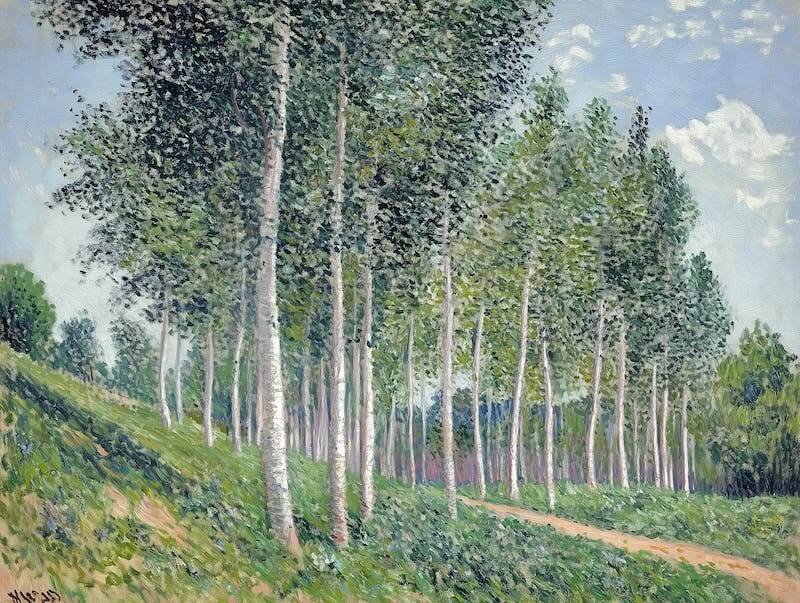
Impressionism (1870s–1880s): one of the earliest movements to break from tradition. Artists like Claude Monet and Pierre-Auguste Renoir began abandoning meticulous detail to capture fleeting moments of light, movement, and atmosphere. This departure from strict realism set the stage for even more radical experimentation.
Post-Impressionism (1880s–1905): Artists like Vincent van Gogh, Paul Cézanne, and Paul Gauguin built on Impressionist techniques but introduced bolder colors, expressive brushwork, and symbolic imagery, laying the foundation for abstraction.
Fauvism & Expressionism (1905–1910): With Henri Matisse leading the Fauvist movement and Edvard Munch pioneering Expressionism, these artists used vivid colors and distorted forms to evoke emotion rather than traditional realism.
Cubism & Abstract Art (1907–1920s): Pablo Picasso and Georges Braque shattered traditional perspective, creating fragmented, geometric compositions that redefined visual art and offered multiple perspectives in one piece.
This push toward abstraction continued with artists like Wassily Kandinsky, one of the first to paint entirely non-representational works.
Dada & Surrealism (1916–1940s): The chaos of World War I led to the anti-art movement Dada, where artists like Marcel Duchamp rejected conventional aesthetics in favor of absurdity and provocation. Shortly thereafter, Salvador Dalí and René Magritte explored the subconscious and dreamlike imagery through Surrealism.
Abstract Expressionism & Pop Art (1940s–1960s): After World War II, Jackson Pollock’s drip paintings and Mark Rothko’s color fields dominated the Abstract Expressionist movement, emphasizing gesture, emotion, and spontaneity.
At the same time—the 1950s in Britain and the 1960s in America—artists like Andy Warhol and Roy Lichtenstein took inspiration from advertising and mass media, challenging the separation of high art and popular culture to give rise to Pop Art.
These movements transformed contemporary art by pushing boundaries and providing new ways of seeing and interpreting the world. Modern Art paved the way for contemporary movements like Minimalism, Conceptual Art, and Digital Art, influencing architecture, fashion, and even technology.
Key Characteristics of Modern Art
The core of modern art is its experiential nature. Each artistic movement shifted modern art away from conventional techniques and subjects to challenge societal norms, encouraging viewers to see beyond traditional aesthetics.
Modern Art sought to capture emotions, ideas, and the changing world through innovation, abstraction, and individual expression rather than sticking to realism. By examining artworks through the lens of personal emotion and creativity, you can better connect with their underlying messages.
Emphasis on Innovation and Experimentation
Modern artists broke away from the strict rules of academic art, embracing new techniques, materials, and ideas. They constantly sought to challenge artistic norms, leading to movements like Cubism, Surrealism, and Abstract Expressionism that redefined the possibilities of visual representation.
For example, Pablo Picasso’s Les Demoiselles d’Avignon (1907) shattered traditional perspective, presenting figures in fragmented, geometric forms.
Abstraction and Non-Traditional Perspectives
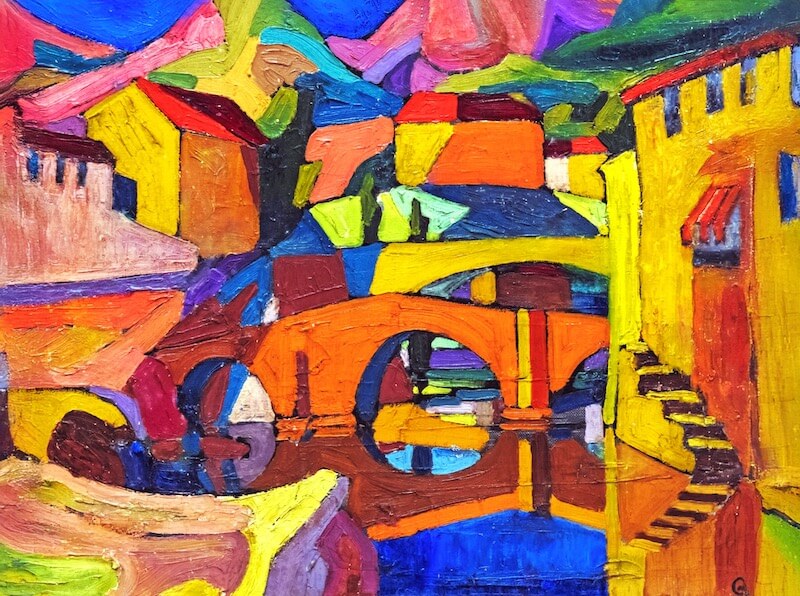
Many Modern artists abandoned realistic depictions, opting for abstract shapes, exaggerated proportions, and distorted perspectives to convey deeper meaning. Some, like Wassily Kandinsky, created abstract compositions, removing recognizable subject matter.
Example: Kandinsky’s Composition VII (1913) used bold colors and chaotic forms to represent emotion rather than a literal scene.
Use of Bold Colors and Expressive Techniques
Modern Art often featured vivid, unnatural colors applied in expressive ways. Inspired by Fauvism and Expressionism, artists used color for visual appeal while evoking emotion and intensity. This is a big part of why modern home decor makes such a statement.
Example: Henri Matisse’s The Joy of Life (1905) employed non-realistic, vibrant hues to convey a sense of energy and movement.
Rejection of Traditional Subject Matter
While classical art focused on religious themes, mythology, and historical events, Modern artists focused on other subjects like everyday life, emotions, industrialization, and social issues. Some, like Marcel Duchamp, even challenged the definition of art itself.
Example: Duchamp’s Fountain (1917), a signed urinal, questioned what could be considered art and pushed the boundaries of artistic expression.
Focus on Individual Expression and Emotion
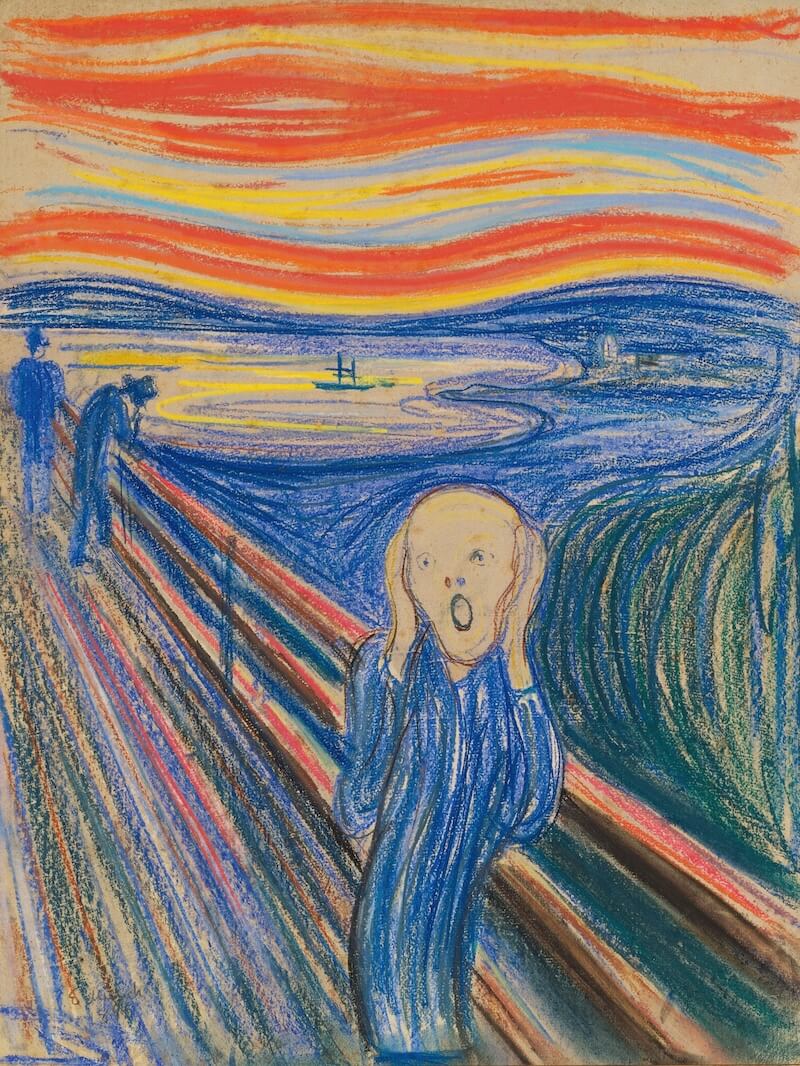
Many Modern Art movements, such as Expressionism and Abstract Expressionism, prioritized personal emotion and subjective experience over realistic representation. Artists used spontaneous brushstrokes, gestural marks, and exaggerated forms to convey inner feelings rather than external appearances.
Example: Edvard Munch’s The Scream (1893) visualized human anxiety through swirling lines and distorted figures.
Influence of Technology and Modern Life
Modern Art reflected the rapidly changing world, influenced by industrialization, urbanization, photography, and new technologies. Some movements, like Futurism, celebrated speed and innovation, while others, like Dada, critiqued modern society and war.
Example: Umberto Boccioni’s Unique Forms of Continuity in Space (1913) depicted movement and dynamism, inspired by machinery and progress.
New Artistic Techniques and Materials
Modern Art experimented with new techniques and materials, such as:
- Collage – Used by artists like Pablo Picasso and Georges Braque in Cubist works.
- Drip Painting – Popularized by Jackson Pollock in Abstract Expressionism.
- Screen Printing – Used by Andy Warhol to mass-produce images of consumer culture.
Example: Warhol’s Marilyn Diptych (1962) used silk-screen printing to replicate Marilyn Monroe’s image, commenting on celebrity culture and mass production.
Iconic Works and Celebrated Artists That Define Modern Art
Modern Art has been shaped by groundbreaking artists and their revolutionary works, each pushing the boundaries of creative expression. From bold experiments in color and form to profound critiques of society and identity, these artists and their masterpieces continue to inspire generations of creators.
Salvador Dalí: Surrealism and the Subconscious
Dalí’s The Persistence of Memory (1931) is one of the most recognizable works of Surrealism, depicting melting clocks in a dreamlike landscape. The painting embodies the fluidity of time and the power of the subconscious—key themes of the Surrealist movement.
Vincent van Gogh: Emotion Through Color and Brushwork

Though van Gogh preceded the formal Modern Art movement, his Starry Night (1889) exemplifies Post-Impressionism’s use of bold colors and expressive brushwork. The painting’s swirling sky conveys deep emotional intensity, a defining trait of Modern artistic expression.
Pablo Picasso: War and Abstraction
Picasso’s Guernica (1937) is a monumental anti-war painting that captures the chaos and suffering of the Spanish Civil War. With fragmented, distorted figures and a stark monochromatic palette, the work is both a political statement and a masterclass in Cubist abstraction.
Marcel Duchamp: Redefining Art Itself
Duchamp’s Fountain (1917), a simple urinal signed “R. Mutt,” challenged the very definition of art. As one of the first and most influential “readymades,” Duchamp used it to emphasize concept over aesthetics, paving the way for Conceptual Art and contemporary artistic experimentation.
Georgia O’Keeffe: American Modernism and Abstraction
O’Keeffe’s Black Iris III (1926) redefined American Modernism by focusing on large-scale floral abstraction. Her use of vibrant color and organic forms emphasized the beauty of nature while blurring the line between realism and abstraction, leading to her becoming one of the most famous Southwestern artists in America.
Frida Kahlo: Identity, Pain, and Magical Realism
Kahlo’s deeply personal self-portraits, such as The Two Fridas (1939), blended Mexican folk art with surreal, symbolic imagery. Her work explored identity, pain, feminism, and cultural heritage, influencing both Modern Art and feminist artistic movements. She’s considered one of the most famous Mexican artists.
Jackson Pollock: Action Painting and Abstract Expressionism
Pollock’s drip painting technique revolutionized Abstract Expressionism. His work No. 5, 1948 epitomizes gestural abstraction, where the process of creating the art became just as significant as the final piece.
Andy Warhol: Pop Art and Consumer Culture
With works like Campbell’s Soup Cans (1962), Warhol blurred the lines between high art and commercial imagery. His silkscreen techniques and repetition of mass-produced objects critiqued consumerism, celebrity culture, and the nature of modern media.
The Impact of Modern Art on Society
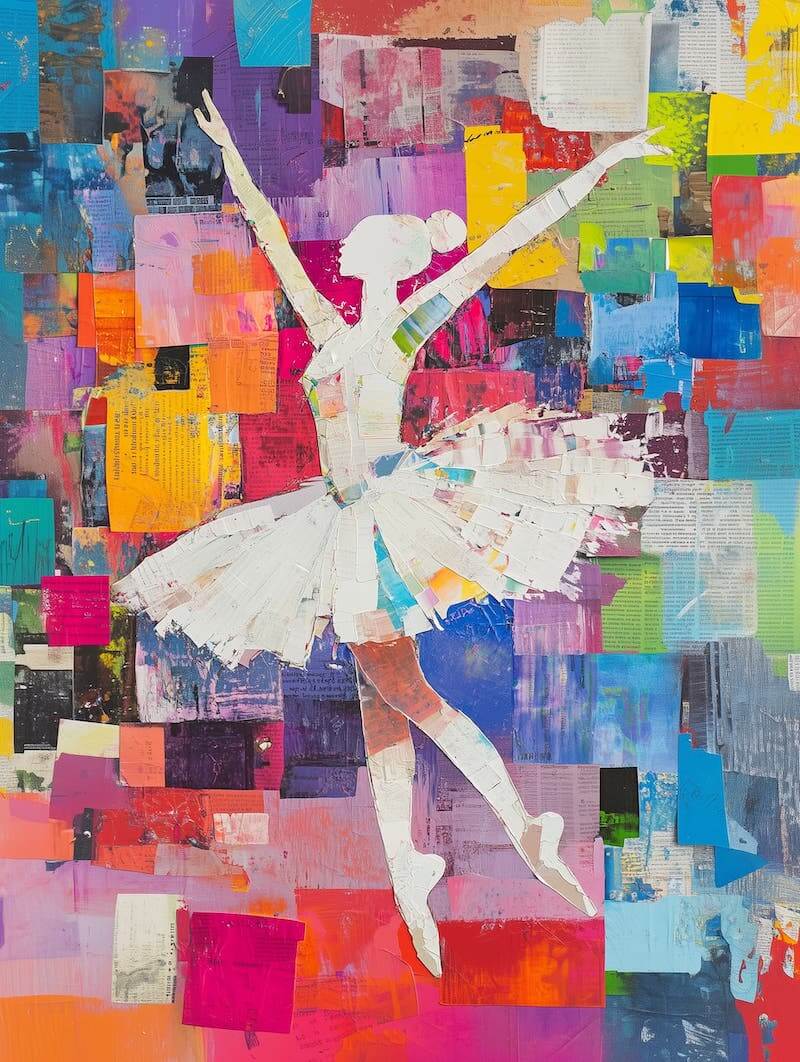
Modern Art has been a subject of controversy from the very beginning. “Impressionism” was originally used as an insult by art critic Louis Leroy, who mockingly described Claude Monet’s Impression, Sunrise as merely an “impression” rather than a finished painting. Similarly, art critic Louis Vauxcelles compared the works of Henri Matisse and his contemporaries to “wild beasts” (les fauves) due to their uninhibited, almost violent use of color. Like the Impressionists before them, the Fauvists reclaimed the name, and their movement went on to challenge artistic norms and influence later developments in modern art.
These early criticisms highlight how Modern Art has consistently defied expectations, sparked debate, and redefined artistic boundaries. Many of the movements that faced initial rejection are now celebrated as milestones in art history, proving that innovation often meets resistance before gaining widespread recognition.
Modern art has profoundly impacted society, challenging people to rethink their perceptions of creativity and expression. By embracing a unique style, modern art movements like Cubism, led by Picasso and Braque, offered fresh perspectives on reality, leading to later art movements like the Harlem Renaissance.
These popular artists transformed artistic conventions and made art more accessible and engaging. Modern art’s themes of magical realism invite viewers to investigate deeper meanings, and its accessibility democratizes art appreciation.
Artists like Andy Warhol highlighted consumer culture, encouraging critical discussions on mass media. Additionally, modern art became a platform for social and political commentary. Frida Kahlo’s work, for example, explored identity and personal experiences.
The Enduring Legacy of Modern Art
Modern Art was more than just a break from tradition. It was a revolution in artistic thought and expression. By rejecting rigid academic standards, Modern artists forever changed how we perceive and interpret artistic expression. This change proved that art is not just about depicting reality but also about exploring new ways to see and experience the world.
Ultimately, Modern Art is not just about what we see—it’s about how we think, question, understand, and engage with the world around us. Modern art continues to challenge norms and embrace change and has left an indelible mark on history.
Want to pay homage to the Modern artists who shaped the world? We have some tips for decorating with Modern-style wall art.




